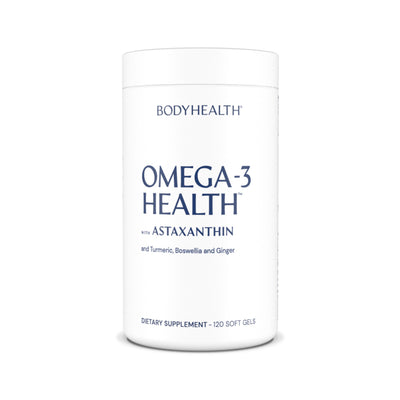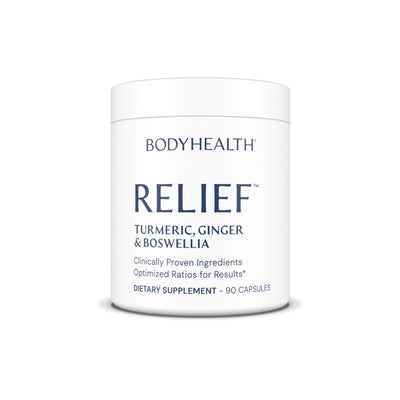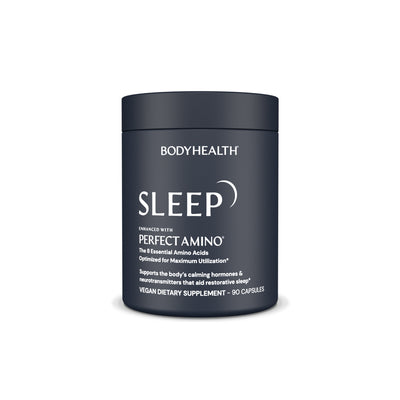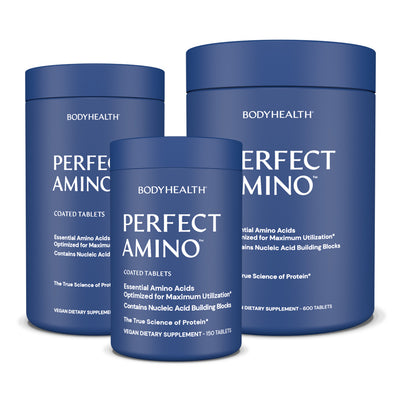How Our Corn & Soy Based Diet Prevents Fat Loss
by Dr David Minkoff February 07, 2024 5 min read

There are two main things driving obesity rates in America today, the exact things which make it easy to gain body fat and hard to lose it: processed sugars… and soy- and corn-based processed foods and meats.
Each of these increase cortisol levels more than almost anything else in our diet, and each for their own reasons.
We’ve already covered processed sugars.
Now let’s cover processed foods.
The use of corn and soy in our diet, and the diets of our cows and chickens, has grown steadily over the last hundred years.
But in the last several decades its use skyrocketed. And this is one of the key factors behind obesity rates in America today.
Today about 80% of what our livestock is fed is soy and corn. And corn and soy are also used as a base for almost all processed foods.
But while they are high in carbohydrates, and that increases body fat creation, they’re also high in something else: Omega 6 fatty acids.
And high omega 6 levels lead to high cortisol levels. And that leads to high body fat creation, high stress levels, poor sleep and recovery, and a host of other physical conditions now prevalent in society today.
Let’s dig in and see how this works.
OMEGA 6 VS OMEGA 3: BALANCING CORTISOL LEVELS
While there are many fats our bodies use, both for energy and also to build structure (the membranes of each of our cells are made from fatty acids), there are some types of fat that are considered essential, two of these being Omega 6 and Omega 3.
These two fatty acids are each used in the membranes of our cells, but they also perform another function.
They’re turned into signaling molecules in our cells.
Omega 6 is turned into a pro-inflammatory signaling molecule, and omega 3 is turned into an anti-inflammatory signaling molecule. And these are both needed.
Omega 6 acts to raise cortisol levels during an emergency, stress, injury or illness. And omega 3 acts to lower cortisol levels.
In our bodies these should exist in a ratio of about 1 to 1. Then they’re in balance and things go just fine.
But when Omega 6 is high, throwing these out of balance, it raises cortisol levels even when not needed, and creates the situations it’s meant to address.
This means higher cortisol levels, easier fat creation and harder fat loss, higher stress levels, lower energy levels, poor sleep and mood, out of balance hormones (high estrogen, low testosterone) and much more.
All because of too high omega 6 levels.
But today, almost all processed foods are made from a base of corn or soy or both.
And animals are being fed mainly corn and soy.
How bad is it?
A cow fed its natural diet of grass and wildflowers has an omega 6 to 3 ratio of about 1:1.
A cow fed the normal soy and corn diet has an omega 6 to 3 ratio of about 17:1. That’s not just a little higher.
It’s the same for chickens, eggs and even milk.
Then when we consume this we don’t get the 1:1 ratio we should, we get their 17:1 ratio, throwing our body’s ratio off.
Processed foods are even higher in omega 6 and lower in omega 3. Corn is about 90:1 omega 6 to 3.
So where does that put most of us?
While a ratio of about 1:1 is the best, or 4:1 at the maximum, the average American has a ratio of between 20:1 and 40:1.
This raises cortisol levels tremendously and keeps them high.
It throws our hormones out of balance, raises our stress levels and lowers our mood.
It makes losing fat and building muscle much harder.
It makes getting good sleep very hard, keeps energy levels low and can make us much more irritable.
If we want to lose body fat and keep it off, we need to balance our Omega 6/3 ratios.
This means low amounts of processed foods, only grass-fed meats, and more fatty fish in our diet (fatty fishes have omega 6 to 3 ratios of about 1:3, it’s one of the key foods eaten in the so-called blue zones of the world where people live longer on average).
And of course take Omega 3 Health.
This is why all of these points (no processed foods or non grass-fed meats, etc) are part of the Fat Loss Protocol. They ensure fat loss is very difficult, and also that you’ll gain it back — which we don't want.
And they raise estrogen levels, while lowering thyroid, testosterone and growth hormone.
We don’t need that. We need you as healthy as you can be.
So stay away from those processed foods and meats as much as you can and take your omega 3.
And if I still haven’t convinced you, take a look at this article here.
Because these high omega 6 levels cause much more damage to our bodies and minds than just a harder time losing weight.
I hope this helps.
Alright, message us in the Group if you have any questions or need anything. And you can also share your progress there and see others' progress.
And on the Diet & Protocol page you'll find a code you can use to purchase any missing items you may need, and you can save at least 15% when purchasing a 30-Day Fat Loss Challenge Package.
And if you haven't seen the Guide To Sustainable Fat Loss & 30-Day Challenge, check them out.
INDEX TO THE GUIDE TO SUSTAINABLE FAT LOSS:
Introduction & Getting Started:
- Introduction To Sustainable Fat Loss & The 30-Day Challenge
- The Key To Sustainable Fat Loss: Calories + Hormones
- The 30-Day Fat Loss Challenge: Diet & Protocol
- The 30-Day Fat Loss Challenge: Workout
Week One:
- The 30-Day Fat Loss Challenge Starts: Running Your Diet The Right Way
- Body Fat Is Made From Sugar — Not Fat
- Reversing Insulin Resistance & Speeding Fat Loss
Week Two:
- What's Causing Cravings For Sugar & Junk Food
- Digestion Is Key To Sustainable Fat Loss
- Cortisol: The Hormone That Makes Fat Loss Nearly Impossible
Week Three:
- How Poor Sleep Prevents Fat Loss
- Estrogen Dominance Prevents Fat Loss In Women & Men
- Raising Growth Hormone & IGF For Fat Loss
Week Four:
- Hunger Vs Cravings: When To Transition Out Of Fat Loss
- Transitioning From Fat Loss To Lean Body
- How Our Corn & Soy Based Diet Prevents Fat Loss
Week Five:
Articles by Health Topic
Get “The Search for the Perfect Protein”
by Dr. David Minkoff
Signup for the BodyHealth Newsletter and get a FREE digital copy of "The Search for the Perfect Protien" by Dr. David Minkoff and discover the key to weight loss, depression, fatigue, insomnia, and osteoporosis!
*These statements have not been evaluated by the Food and Drug Administration. These products are not intended to diagnose, treat, cure, or prevent any disease.



